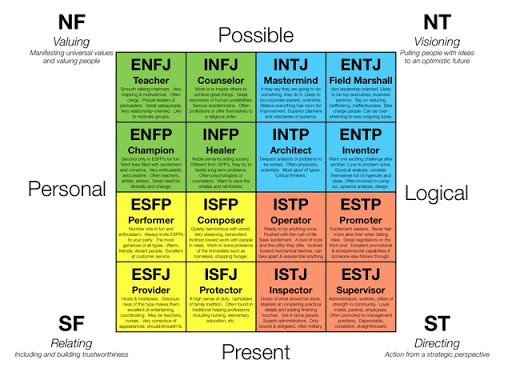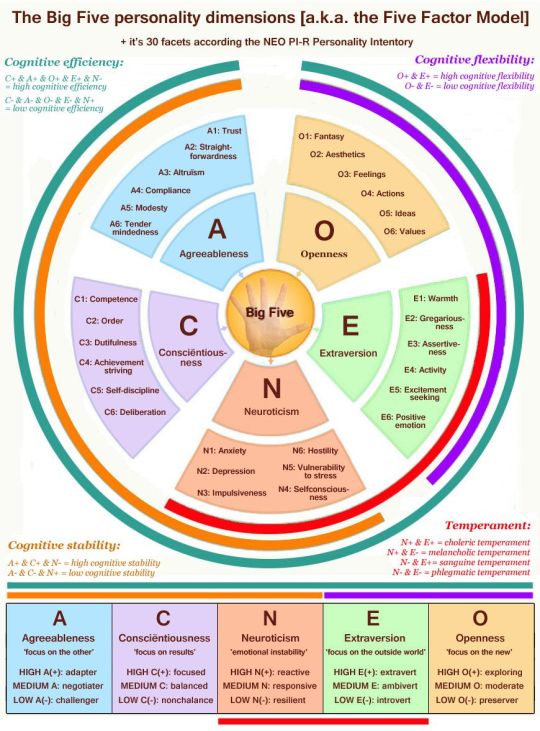#enneagramexplained
Explore tagged Tumblr posts
Text
Exploring More Enneagram Types
Here’s a deeper look at the other Enneagram types and their core motivations. Each type brings a unique perspective to how we navigate life, relationships, and personal growth:
- Type 1 (The Perfectionist): Ethical, responsible, and idealistic. Motivated by a desire to improve themselves, others, and the world.
- Type 2 (The Helper): Caring, empathetic, and generous. Driven by a need to be loved and appreciated for their support.
- Type 3 (The Achiever): Ambitious, driven, and success-oriented. Motivated by the desire to be recognized and admired for their accomplishments.
- Type 4 (The Individualist): Creative, emotional, and unique. Seeking authenticity and a sense of personal identity.
- Type 5 (The Investigator): Curious, analytical, and independent. Focused on gaining knowledge and understanding the world around them.
- Type 6 (The Loyalist): Loyal, reliable, and cautious. Driven by a need for safety and security in relationships and situations.
- Type 7 (The Enthusiast): Optimistic, spontaneous, and adventurous. Motivated by a desire to experience joy and avoid pain.
- Type 8 (The Challenger): Assertive, strong-willed, and protective. Driven by a need to control their environment and assert their power.
- Type 9 (The Peacemaker): Easygoing, adaptable, and diplomatic. Motivated by a desire for inner and outer peace, avoiding conflict.
1 note
·
View note
Note
rain, do you have any recommendation for instinctictual stack and tritype test? or just enneagram in general
gotta ask in the askbox so other ppl would know too 👉👈
tyyyy <3
I honestly just recommend reading and studying about enneagram, tests aren't the most reliable lol. But if you still wanna do it for fun anyway, I think these are some decent tests ⬇️
Katherine Fauvre's tritype test
Electic energies
Enneagram user guide
I mainly learned enneagram through research online tho, e.g enneagram institute, enneagrammer, etc. I also learned a lot by following several enneagram accounts on instagram and tumblr 👍 Here's some of the ones I follow on tumblr:
@indepth-mbti
@funkymbtifiction
@anenneagramoverview
@headlesstypo
@blueopinions49
@k-enneagram
@random-esfp
And some instagram ennea accounts:
Indepth_mbti
Random_esfp
enneagramwithjb
enneagramwithabbey
enneagrampaths
enneagramexplained
enneagramandcoaching
Empathyarchitects (also has a test, the link in their bio)
Helloenneagram
Enneagramwithkelsey
Michaelshahan_therapy
Infjinxed
Intj.jaded
Menneagram
Goblinsofdiscord (mainly just a meme page tho lol but they offer typing services)
Hopefully this helps 😅
#enneagram#enneagram source#ask#typology#you can also try to look for some enneagram books#i haven't read any so that's why i didn't list any 😭#also yeah there's a lot of ennea content on instagram surprisingly lol i found A LOT on there#OH if you have reddit. check out the enneagram subreddit. it's actually pretty helpful lol
18 notes
·
View notes
Text
What's the Difference Between the Big 5, the Enneagram, and MBTI?
People often ask us why we based our AI-powered personality and communication analysis on the Big 5 Model instead of other methods, such as Enneagram, and MBTI. Accordingly, we will give you a summary of these common assessment methods and talk about their differences and connections.
In the field of psychology, the five dimensions (the ‘Big Five’) are commonly used in the research and study of personality. Since the late 20th Century, these factors have been used to measure, and develop a better understanding of individual differences in personality. It's commonly used as a pre-employment assessment---and as a basis for other personality systems. The Enneagram and the Myers-Briggs pull from the science-based Big Five.
What Is the Enneagram?

The Enneagram consists of nine main, overarching types that interact with each other in unique ways. Another feature of the Enneagram is that it has “wings,” which highlights a few other dimensions of personality. A person’s wing illustrates their secondary Enneagram type. It’s common for a person to exhibit traits of another Enneagram type.
What is MBTI?

The Myers-Briggs Type Indicator (MBTI) has 4 dimensions that reveals how an individual gathers information and makes decisions. The 4 dimensions can come in 16 different combinations, ultimately creating 16 different types of personalities.
The 8 Functions
Extraverted Thinking (Te)/ Introverted Thinking (Ti)
Extraverted Feeling (Fe)/ Introverted Feeling (Fi)
Extraverted Intuition (Ne)/ Introverted Intuition (Ni)
Extraverted Sensing (Se)/ Introverted Sensing (Si)
The Big Five Personality Traits (or OCEAN) is a result of researched trait theory. Personality is one of the most complex areas to understand. After decades, researches narrowed down personality into 5 main characteristics.
How Does the Big 5 Differ from MBTI and Enneagram?

Most significantly, the MBTI and Enneagram give a personality type—rather than a personality trait. The Big Five are individual characteristics that can be placed high or low. Given the Big 5 is a science-wide consensus, psychologists use traits versus types to talk about personality. Because personality is characterized as a collection of traits, it’s especially valuable to workplace items like pre-employment assessments. Type descriptions, used in MBTI and Enneagram, do have some correlations with the Big 5. How scientific these correlations may be up for debate, but MBTI and Enneagram do pull from the Big 5. These systems share similarities.
Big 5 Model
1. Openness to experience
2. Conscientiousness
3. Extraversion
4. Agreeableness
5. Neuroticism
The Big 5 theory stems from the lexicon of adjectives used to describe a person. They assumed traits are basically adjectives or short, descriptive phrases. Therefore the early practice of what would be personality research involved thumbing through the dictionary. Yes, really. The whole theory is rooted in the idea that individual differences that are socially relevant would naturally arise in their language. The more common the word becomes, the greater the likelihood that a significant difference is summarized in a single world.
The scientific community regards the Big Five as the only scientific consensus in personality psychology.
Defining the Big 5
Openness to experience
Think of those people who have a willingness to try new activities or who are open to unconventional, new ideas. This dimension expressed in the willingness to try out the unknown.Traveling to new places and visiting new cultures are a few indicators of a person more “open”. Those who have low levels are generally skeptical about the unknown and questioning the status quo.
Conscientiousness
This personality trait found in the Five Factor Personality Model examines impulse control. Individuals who are more conscientious on this particular facet of the personality scale are able to control impulse. They’re the classmates who tend to organize their class assignments by color; the co-workers who use a desk calendar in addition to their online calendar and journal calendar.
Extraversion-Introversion
This dimension refers to how people gain their energy. Extroverts to gain energy from activities and people. Introverts prefer the world of ideas and internal thoughts. Extroverts possess the special ability to advance projects quickly. Introvert’s special skills include picking up the moving dynamics of a particular situation.
Agreeableness
Agreeable individuals take a rather maternal and a more cooperative approach to situations. They care deeply about people, more so than themselves. They are far more likely to consider and incorporate the feelings of others in decisions. Those who score low in agreeableness are viewed as “competitive”.
Neuroticism
Neuroticism refers to the emotional stability a person has. If they tend to be emotionally stable ---meaning their moods tend to stay pretty constant--- they would be termed as “low neuroticism”. If their moods and feelings fluctuate over a period of time, they are labeled with “high neuroticism”.
The Big 5, the Enneagram, and the MBTI share similarities. The biggest distinction is that the personality type tests pull from the research-based Big 5 model. Here you find out more about the foundations of the Big 5 model and how it is used by professionals around the globe.
What Really Counts: Self-Assessment vs. Observer-Ratings

More important than the differentiating between Big 5, Enneagram, and MBTI is the way in which they are measured. Personality tests can be based on self-assessments and on observer ratings. Self-reporting concentrates on how an individual measures their own internal dynamics. Observer ratings focus on how a peer or a neutral observer perceives the personality of an individual.
Self-reporting and observer ratings do not provide redundant information, but actually capture complementary aspects of an individual’s personality. One explanation of the self-and-observer difference in personality evaluation is that observer evaluation is more shaped social behaviour and thus formed by how others perceive an individual. Conversely,personality self-ratings are comparatively more shaped by own feelings and motives.
If self-reporting and observer ratings are not necessarily measuring the same aspects of personality, which measurement method is more relevantin the workplace? In short, it depends on the question. In a workplace context, such as hiring and recruitment, it turns out observer ratings have an incremental predictive validity over self-reporting. For example, Mount et al. (1994) examined whether observer ratings from supervisors, co-workers, or customers could predict performance; they found that Conscientiousness and Extraversion assessed externally (e.g., supervisor) were valid predictors for job performance. Self-assessments usually do not offer the same predictive accuracy.
AI-based Observer Ratings - Faster and Less Biased
In the past, observer-based personality tests required human observers. Accordingly they occured high costs and were prone to biases. Nowadays, more and more organizations rely on AI-based observer ratings to solve these issues. Retorio has developed neuronal networks that analyze human behavior in short video interviews or digital training simulations within seconds, free of bias.
Companies like BMW (Case Study), Happycar (Case Study), or Lufthansa use Retorio to gain faster and deeper insights into their talent pool. Retorio's machine learning algorithms support HR departments and executives around the world.
LEARN WHAT MAKES ELON MUSK, ELON MUSK?

Retorio is a video-based behavioral assessment powered by AI. It uses facial expression, language, gesture, and voice to create a Big 5 Personality profile.
Popular Posts You May Like:
What to Look for in an Employee Training Software
Which Psychological Defenses Do You Bring to Work?
The Cost of a Toxic Culture and How to Fix It
#psychology#interview#interviewtips#video#videointerview#videointerviewing#AI#diversity#enneagramexplained#enneagram#type1#enneagram test#mbti personality types#mbti stuff#big5#elonmusk#elon musk
11 notes
·
View notes
Text
The One Where We Give An Overview of the Enneagram
For today's blog post I wanted to talk about the Enneagram.
It seems like everyone has their thing when it comes to personality tests/descriptions - whether it be Myers-Briggs, horoscopes, the color test, etc.
My thing is DEFINITELY the Enneagram. I've developed a habit of regularly guessing the people in my life's "type" and convincing people to take the test. I first took the Enneagram a year and a half ago. I now know that my result at the time was skewed because I was in intense turmoil - more on that later. We then dived into the Enneagram as part of my RYT200 training and I became very fascinated with it. Most recently, I gave a Lunch & Learn presentation at work on the Enneagram.

Before we really dive in - a few quick notes:
I am NOT an Enneagram coach. This is a real thing and there are people out there but this is purely just a passionate hobby of mine.
Most of the information I will describe is sourced from the Enneagram Institute.
Pictures are sourced from Contemplative.org
A great resource to take the test for free is: https://www.eclecticenergies.com/enneagram/test
So…
What exactly is the Enneagram?! Whelp, it's a personality test. But it also has been around a LONG time and has entire institutions devoted to studying it. It is based around 9 "types," has "growth/stress paths," "wings," and "centers," and "healthy/unhealthy levels". These are a lot to get into but are essential in truly understanding who you are in relation to the Enneagram, so my current plan is to get into them in specifically dedicated posts.
It should be noted that it is "common to find a little of yourself in all nine of the types, although one of them should stand out as being closest to yourself. This is your basic personality type." Most of the major Enneagram authors agree that we are all BORN with a dominant type - so nature rather than nurture when it comes to the enneagram. Other important things to note include:
Types are gender-neutral; no difference for male vs. female.
People don't change types. Growth and stress paths can get confusing with this BUT people's basic type is their basic type forever.
The numbers on the Enneagram are value-neutral - no type is "worse" or "better" than the other.
I highly, highly, highly encourage you to take the test. Personality tests can seem trivial, but the Enneagram is important in how we relate to others. It helps us empathize with other's motivations, realize our own patterns and motivations, and be more in-tune with others.
After you know your type, I would highly encourage you to look into some of the following resources:
Read about your type on www.enneagraminstitute.com - this page also has fantastic articles on how types interact with each other in relationships as well as a daily email list that can provide horoscope-style introspection for the day based on your type.
Check out some awesome Instagram pages!! I am listing a few of my faves below. They are a blend of "oh shit I feel CALLED OUT" and "hahahah this is what 'The Office' meme fits my enneagram type."
- @enneagramandcoffee
- @enneagramashton
- @enneagramexplained
- @enneagramandmemes
- @enneagram.life
- @socialenneagram
- @enneadogs
- @consciousenneagram
The Typology podcast. So so good.
Sleeping At Last!!! Their band released an "Enneagram" album - they wrote a song for each type. It will PROBABLY make you cry when you listen to your type's song. They also have a podcast. And last but not least, they have a collaboration with The Giving Keys with a necklace that has a word for each type.
I'm excited to dive in more to the Enneagram over the next few weeks and I'm extra excited to hear everyone's type so if you know your type, feel free to comment below or tell us!
3 notes
·
View notes
Photo

Posted @withregram • @enneagramexplained No matter which enneagram type you are, you are awesome! Did you know that? ⠀ Each enneagram type has something amazing to offer to us all! Know that those around you love you for your unique traits that make you who you are! ⠀ 💛Tag your friends and let them know that you love them for their enneagram traits as well! https://www.instagram.com/p/CewgVk4uLOW/?igshid=NGJjMDIxMWI=
0 notes
Text
Why do I seek attention?
-Question to myself, reflection needed
(Brought on by @enneagramexplained on Instgram’s posts about Hornevian groupings which are groupings based on how we react to others in order to meet our own needs. I was previously a 2 (part of the compliant Hornevian grouping), and am currently a 4 (part of the withdrawn grouping); both react in ways hoping to seek attention.)
0 notes